Domain and Range Foldables (DIXI ROYD)
Here are the domain and range foldables I created for my Algebra 1 students to glue in their interactive notebooks. I use the DIXI ROYD mnemonic device to help students remember the difference between domain and range.
DIXI ROYD Foldables for Domain and Range
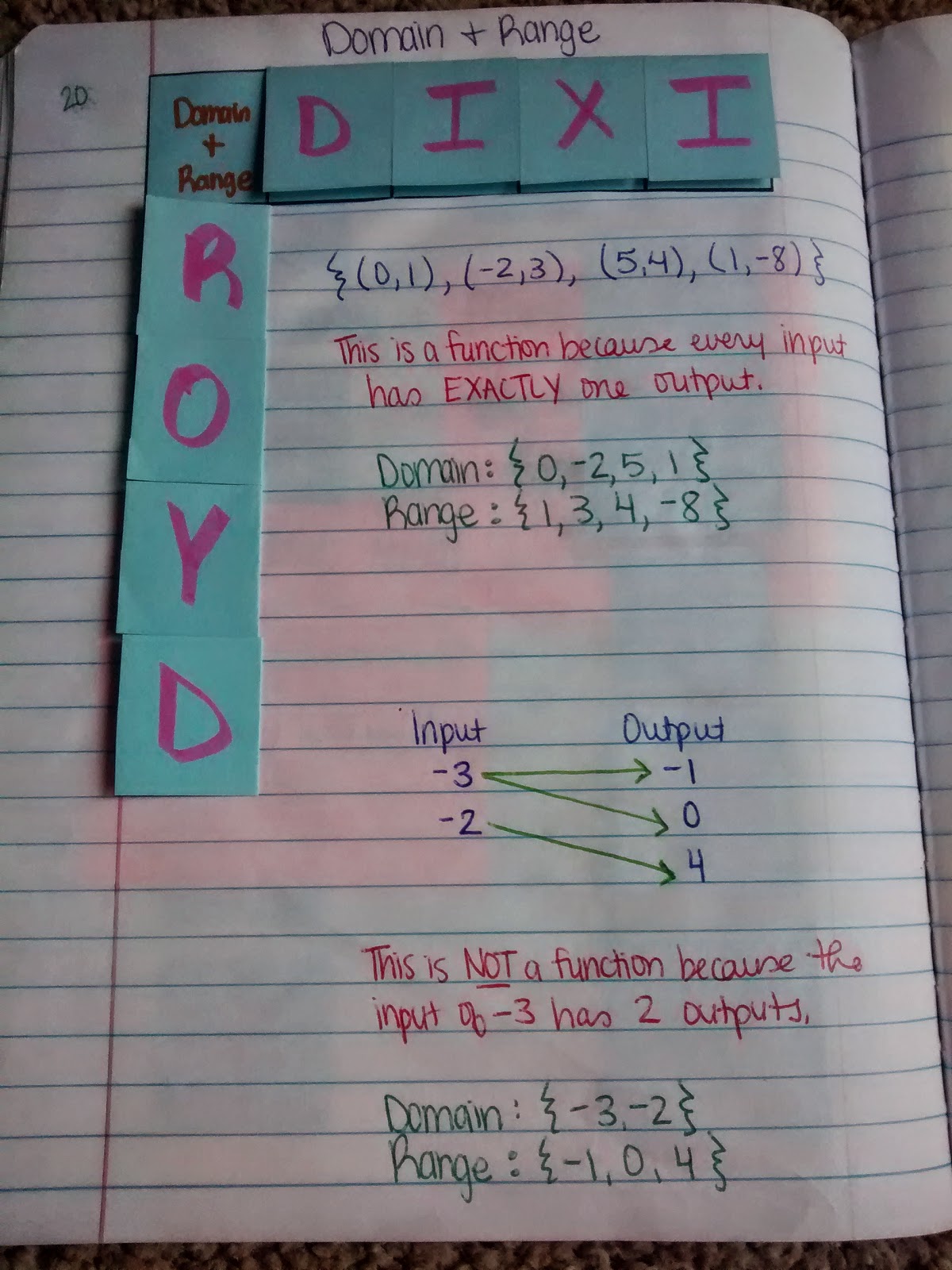
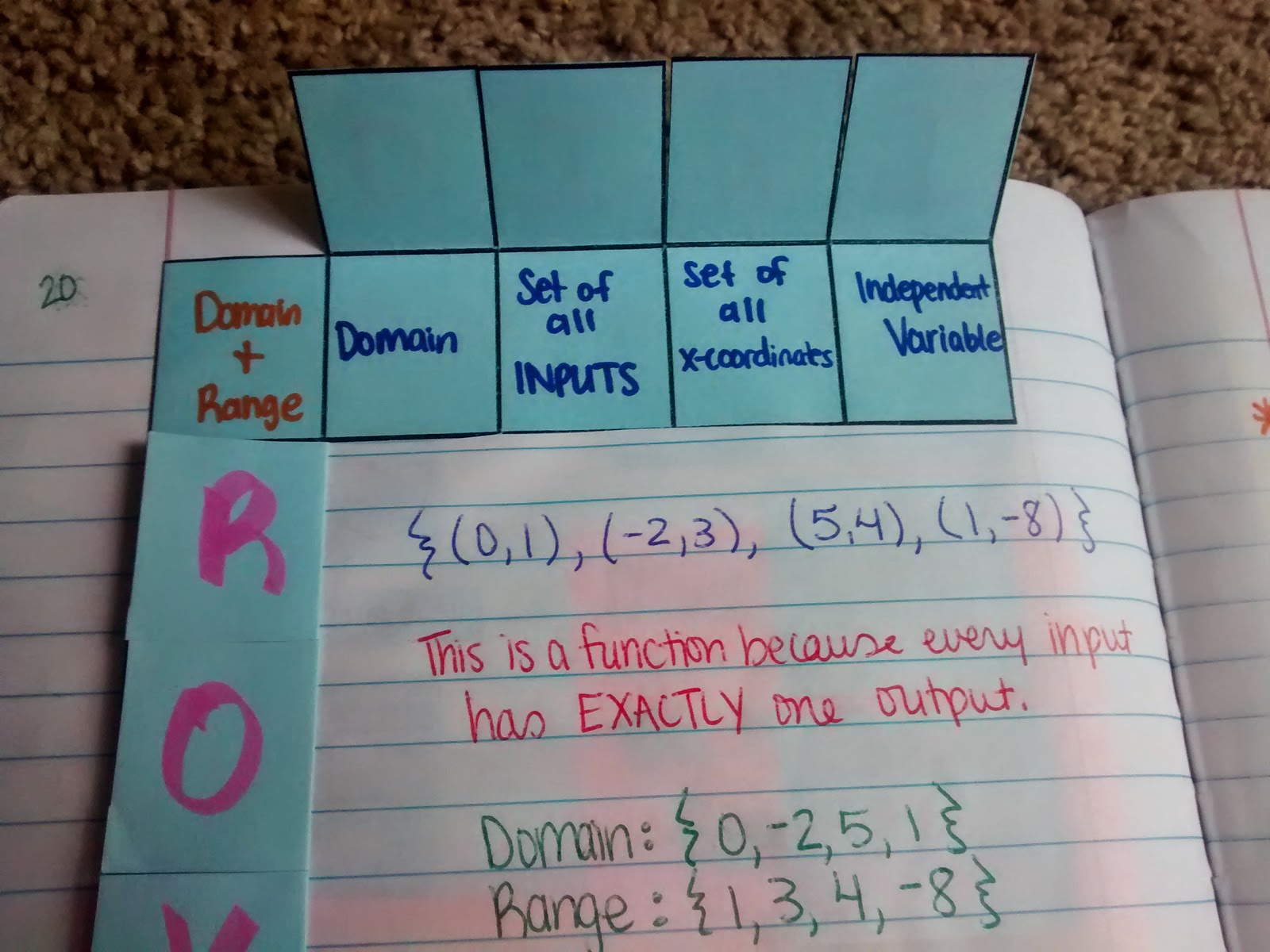
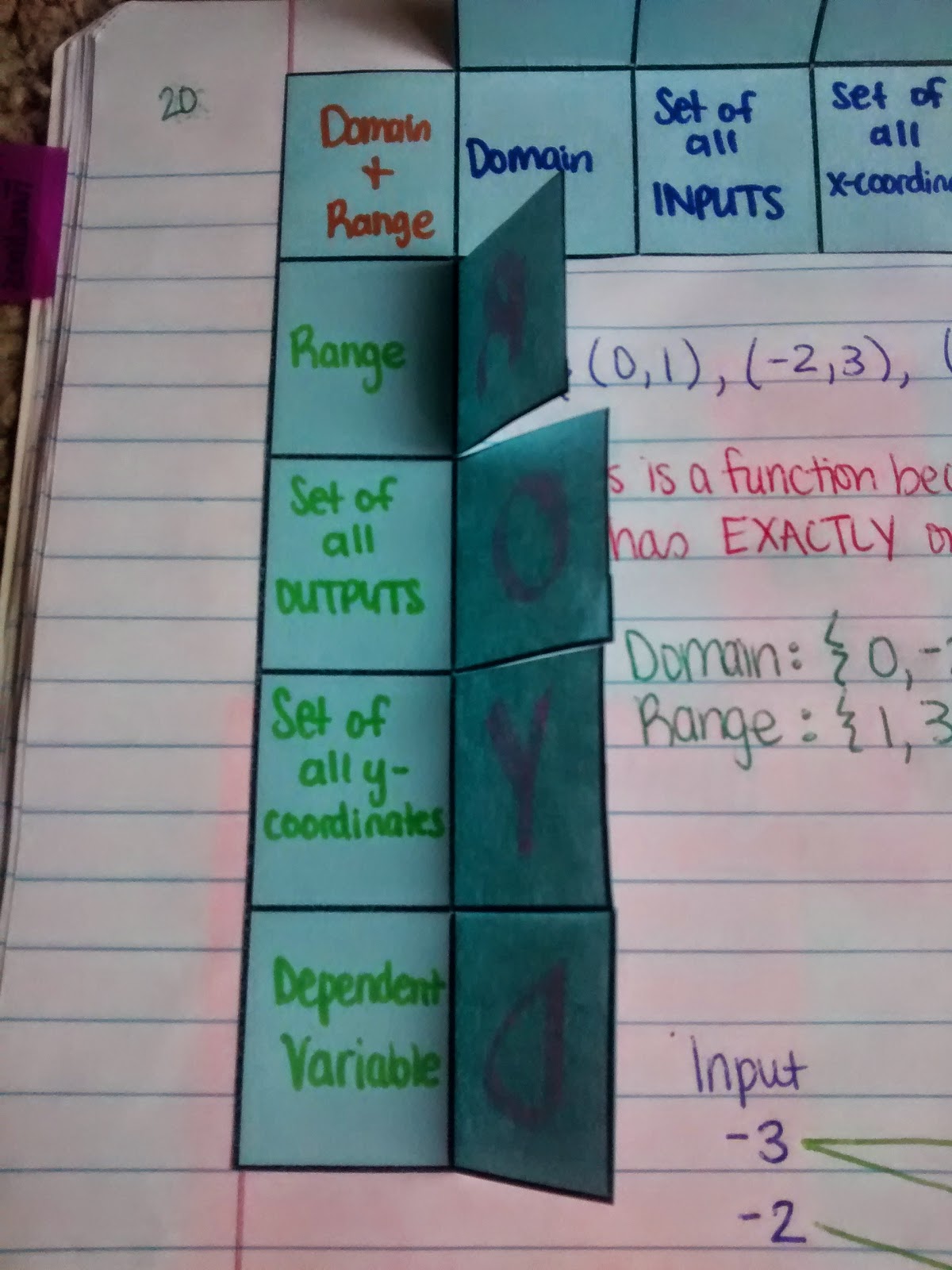
We made a DIXI ROYD foldable to remind ourselves of the definitions of domain and range.
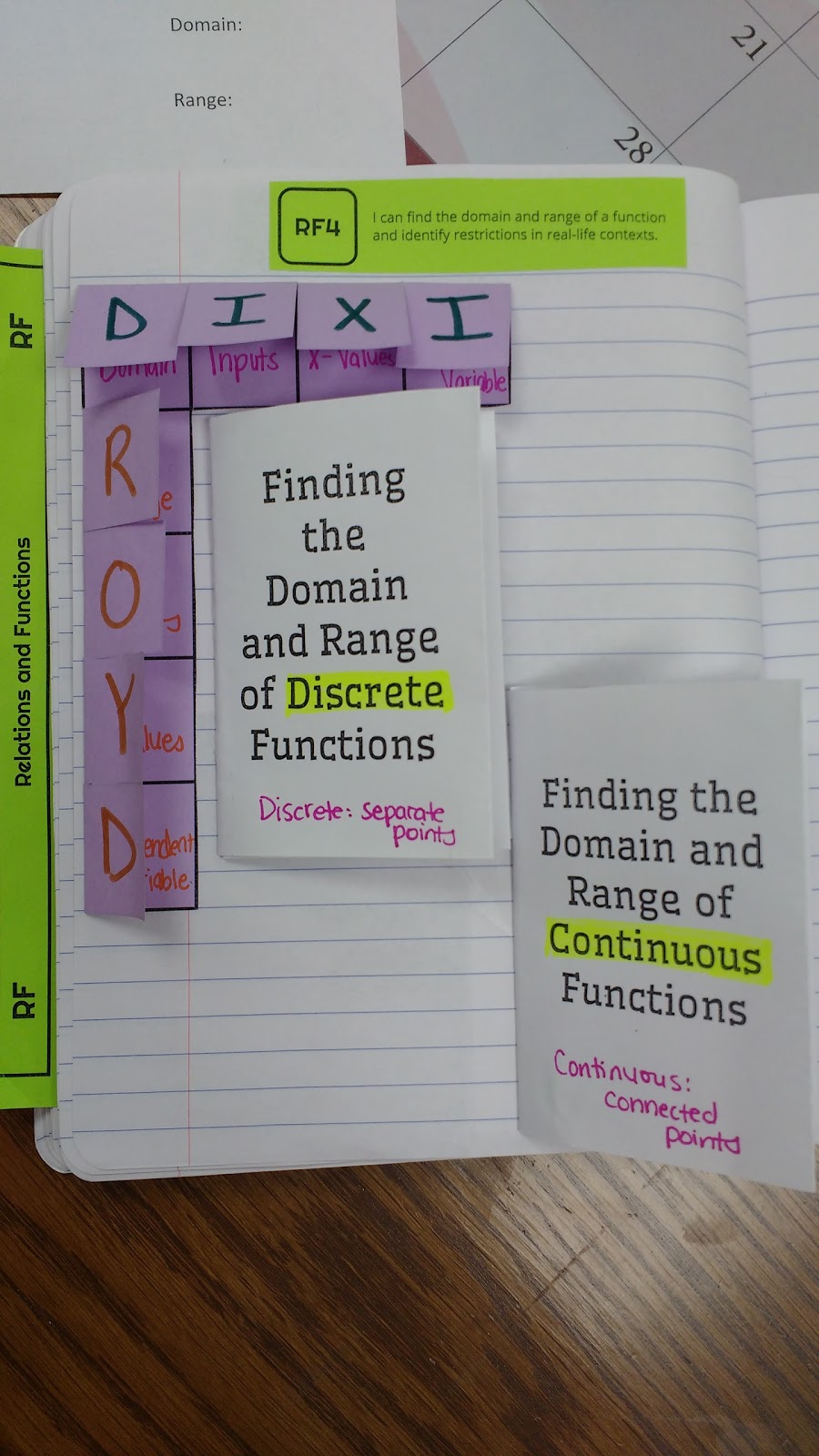
Under each flap, students write what the letter stands for.
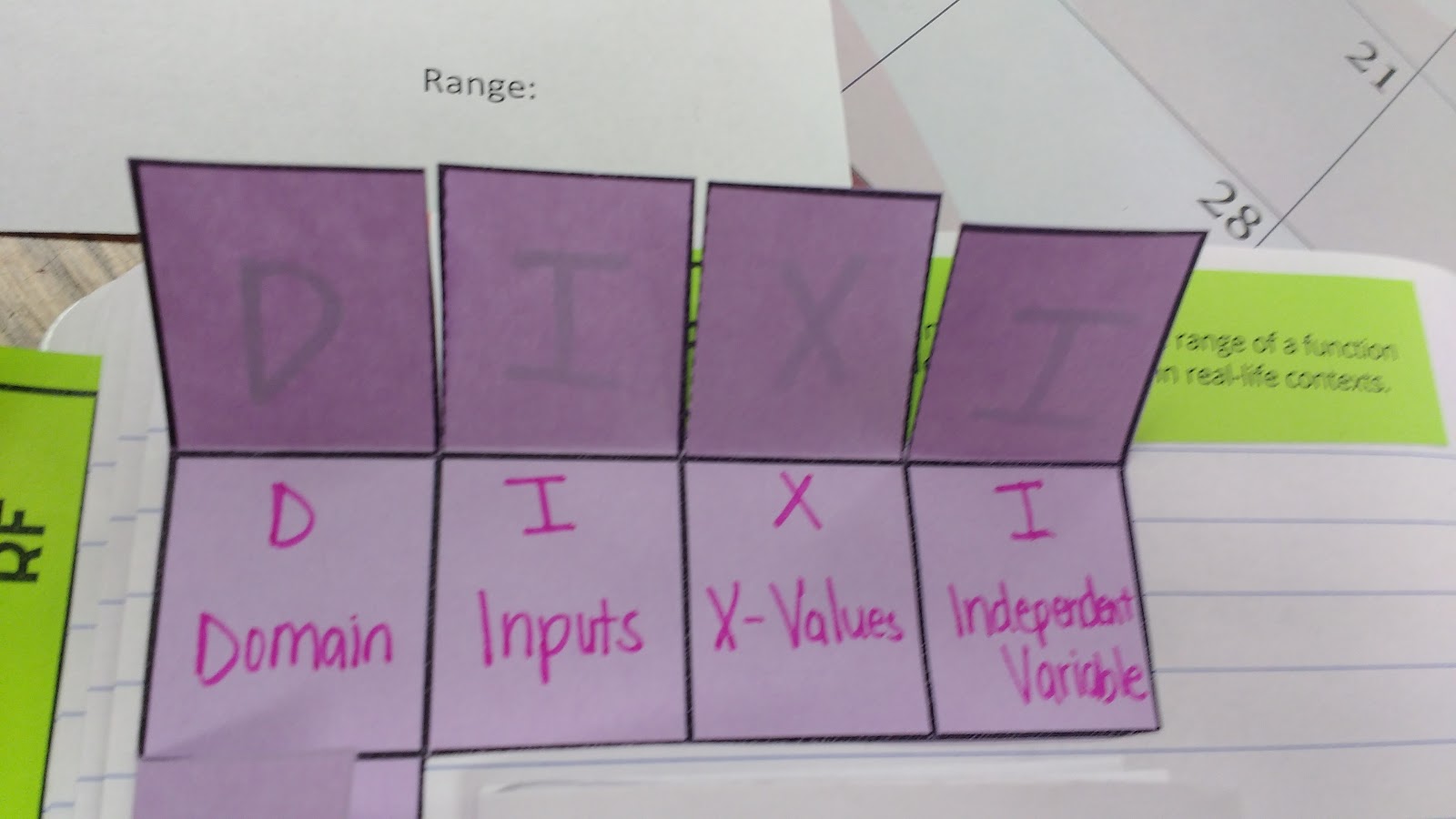
As we were doing some practice problems, I kept emphasizing that domain stands for x and range stands for y. One of my students said that she was going to write that in her notebook. Another student pointed out that it was exactly what we had already written in our notebook!
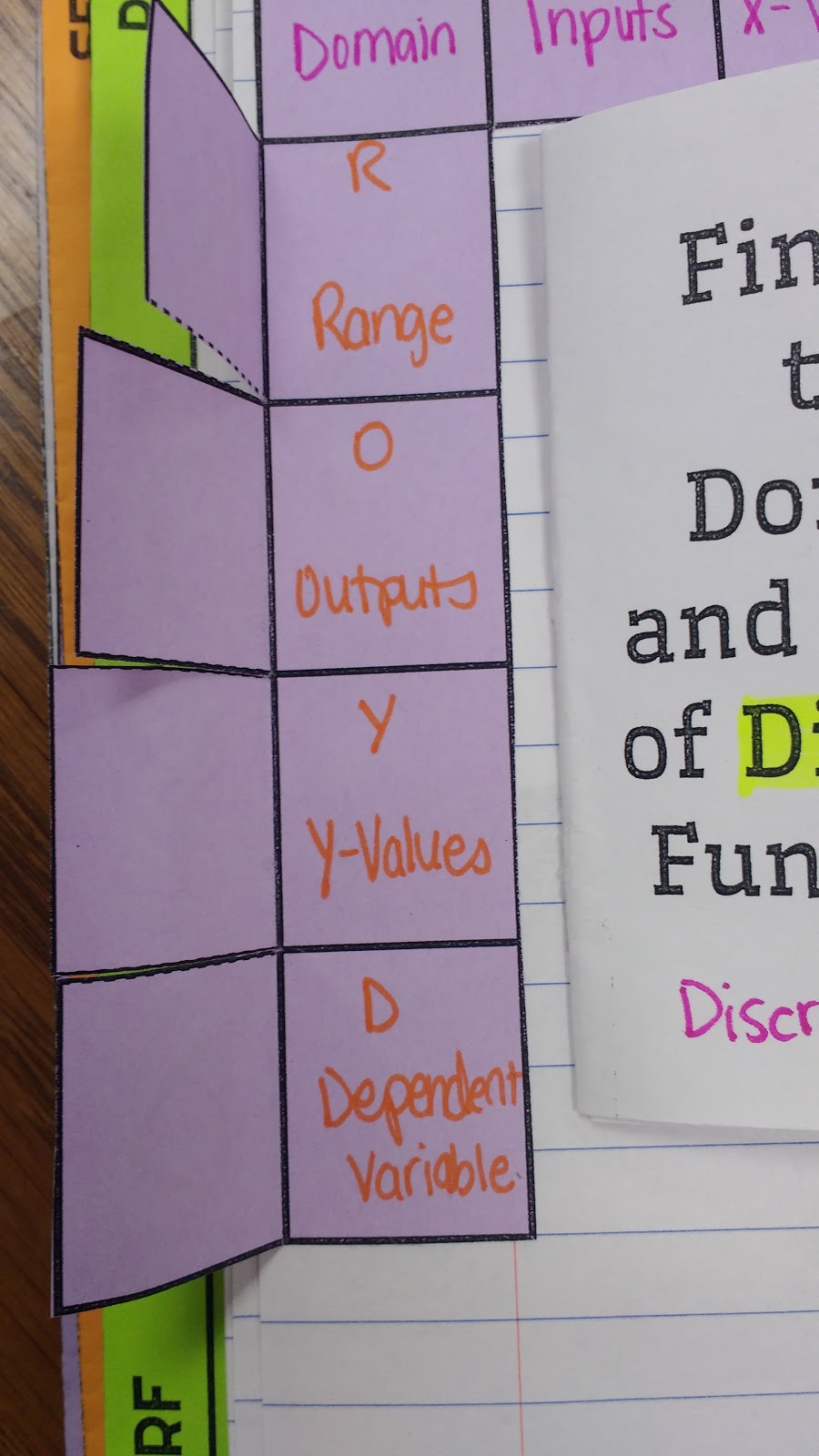
What does DIXI ROYD stand for?
DIXI ROYD is a mnemonic device to help students keep domain and range straight.
Here’s what it stands for:
D – Domain
I – Inputs
X – X-Values
I – Independent Variable
R – Range
O – Outputs
Y – Y-Values
D – Dependent Variable
Domain and Range Practice Books
Then, we made two small books to hold our practice problems for discrete functions and continuous functions. You can find the instructions for how to fold these practice books here.
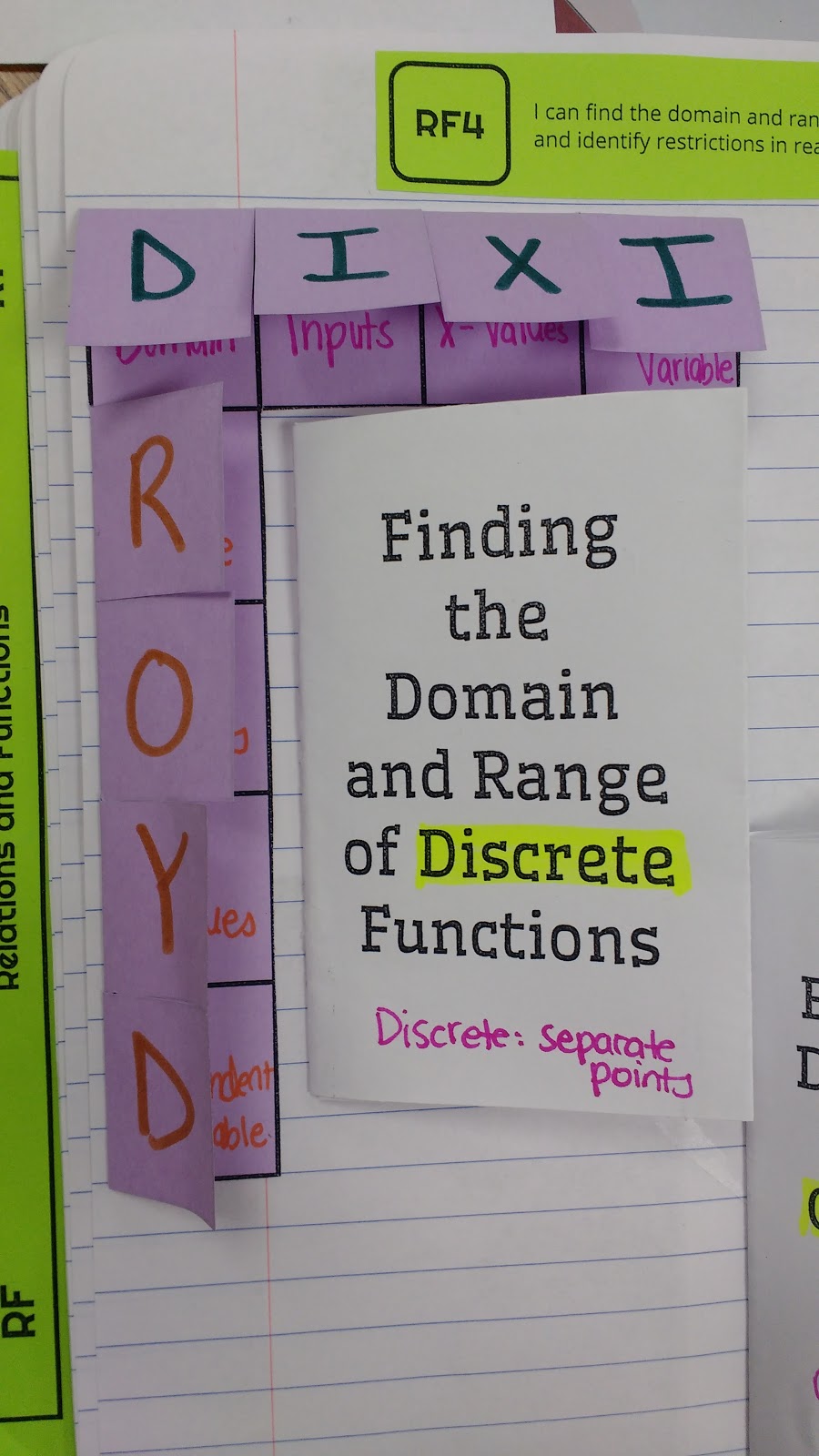
Finding the Domain and Range of Discrete Functions Practice Book
We started our domain and range practice with some discrete functions. Though, as we were doing one of the problems in the book, I realized it WASN’T a function. Oops…
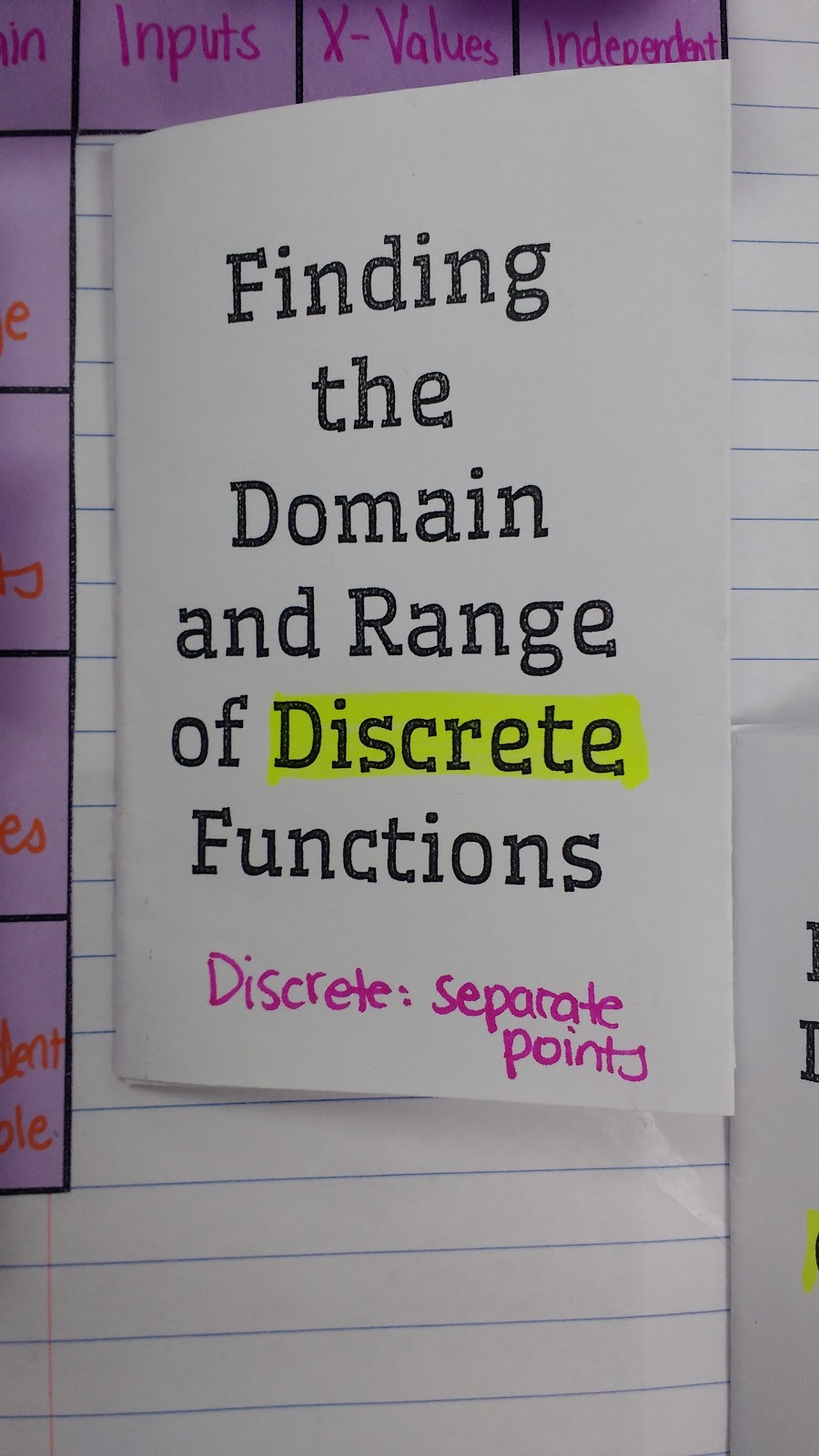
I tried to give students tables, mapping diagrams, sets of ordered pairs, and coordinate planes. I want them to be able to deal with any representation of a function! For help switching between representations of functions, I recommend this representations of relations foldable and telephone game that I created.
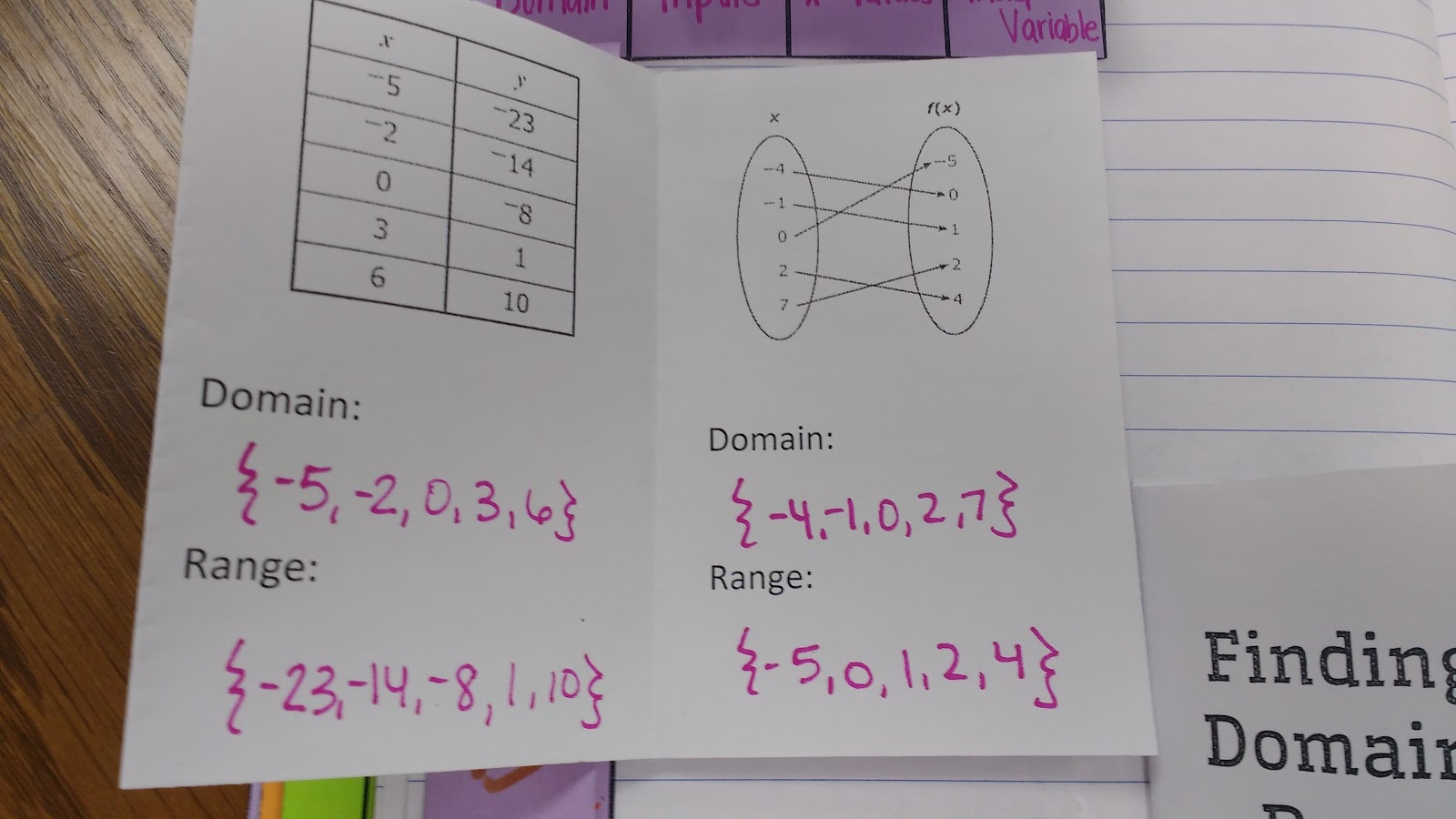
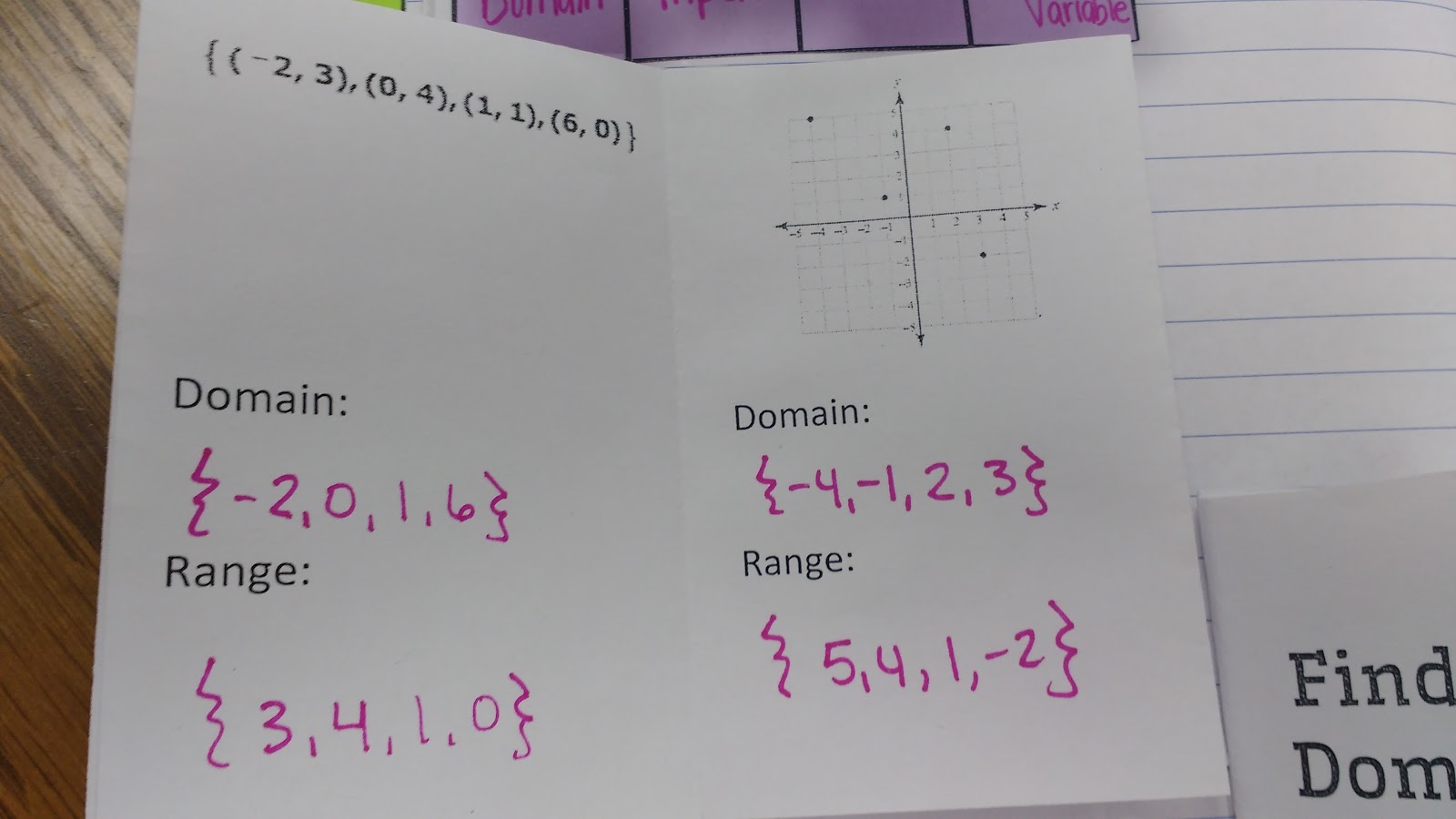
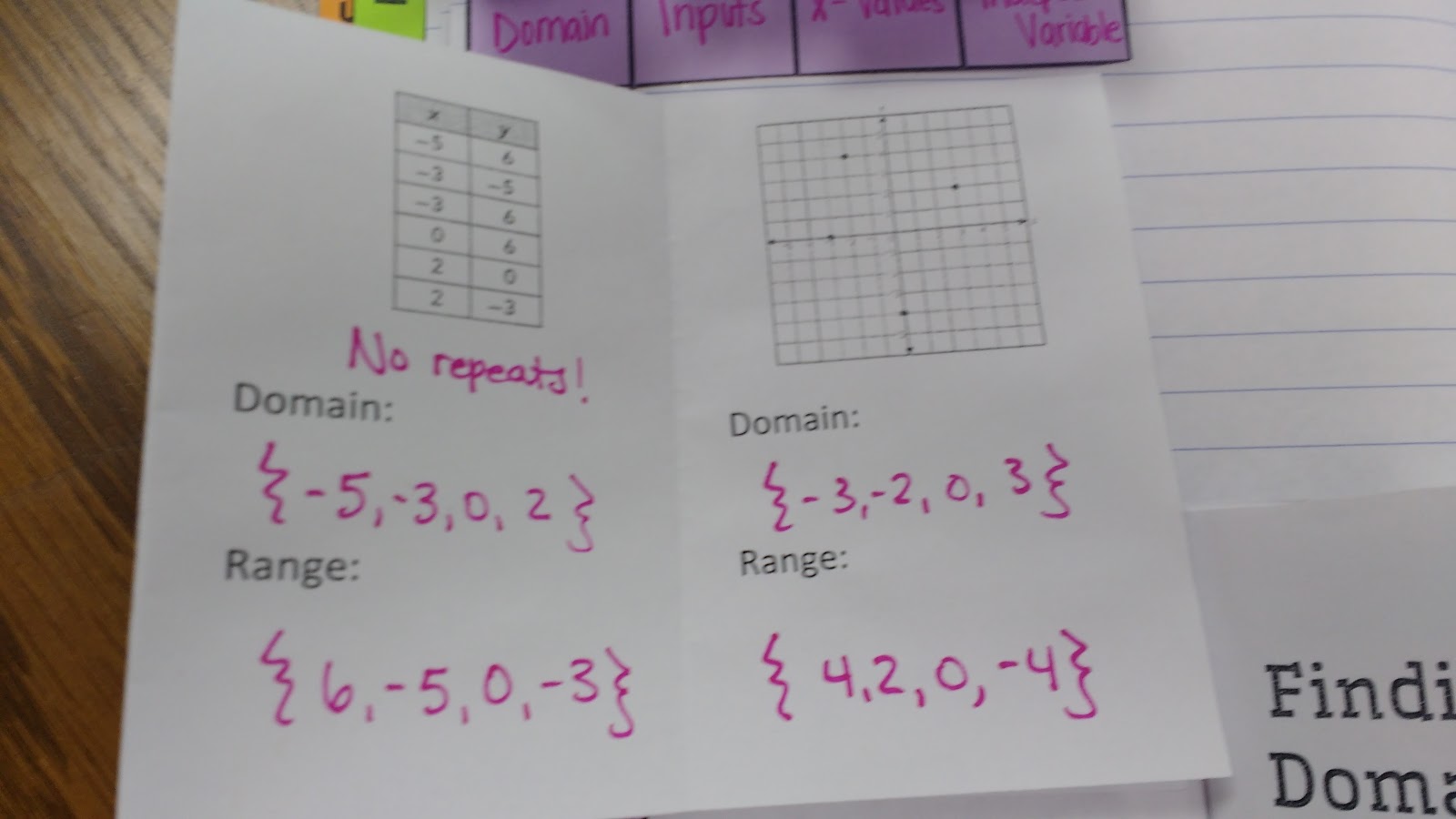
My students were really excited after we finished this first practice book because they thought we were completely done with domain and range at that point. Nope, we still have to deal with continuous functions!
Finding the Domain and Range of Continuous Functions Practice Book
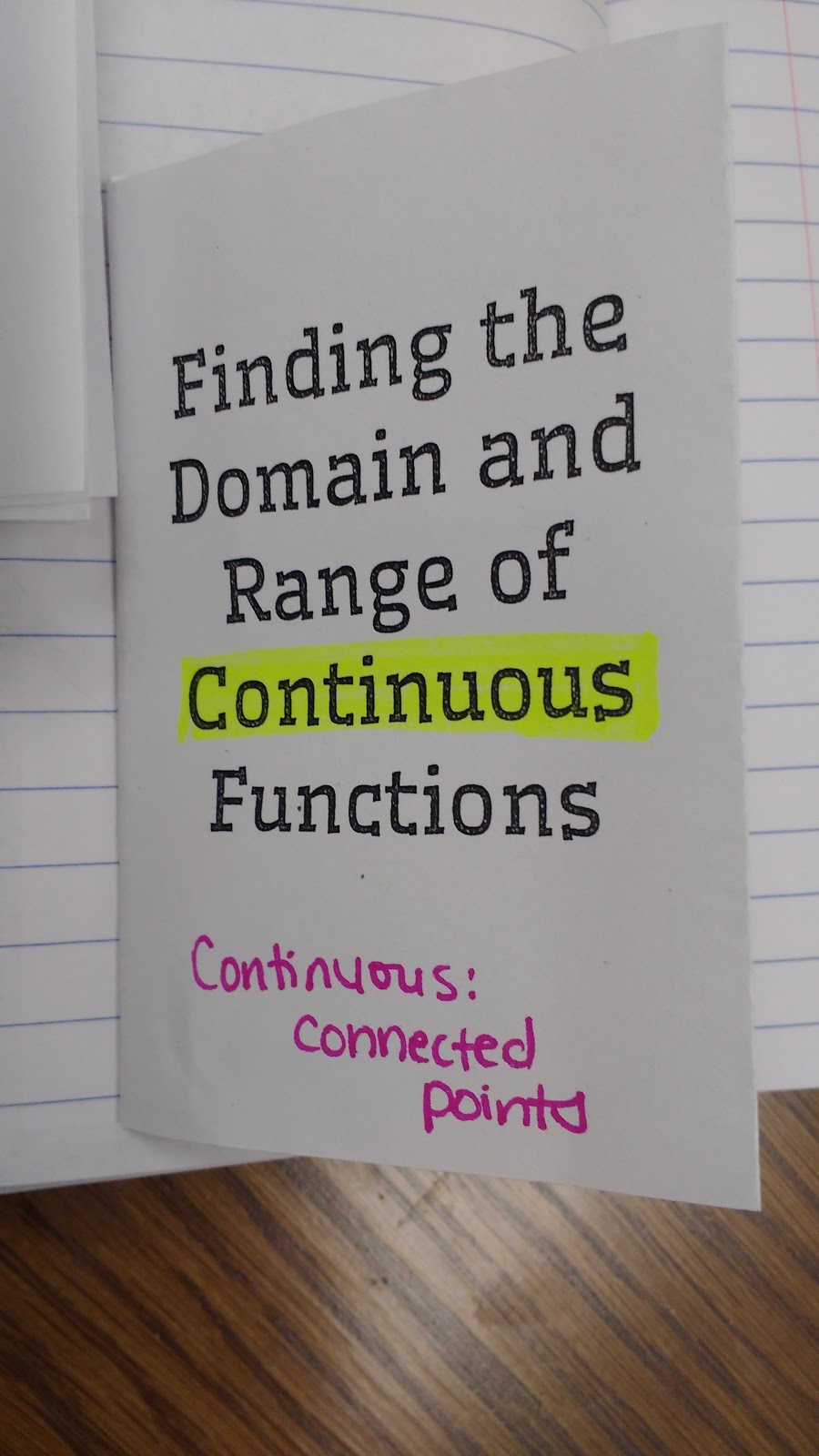
I had my students take colored pencils or highlighters and draw lines that intersect the graph at the highest point, lowest point, left-most point, and right-most point. Then, we used the “box” formed by these lines to identify the domain and range.
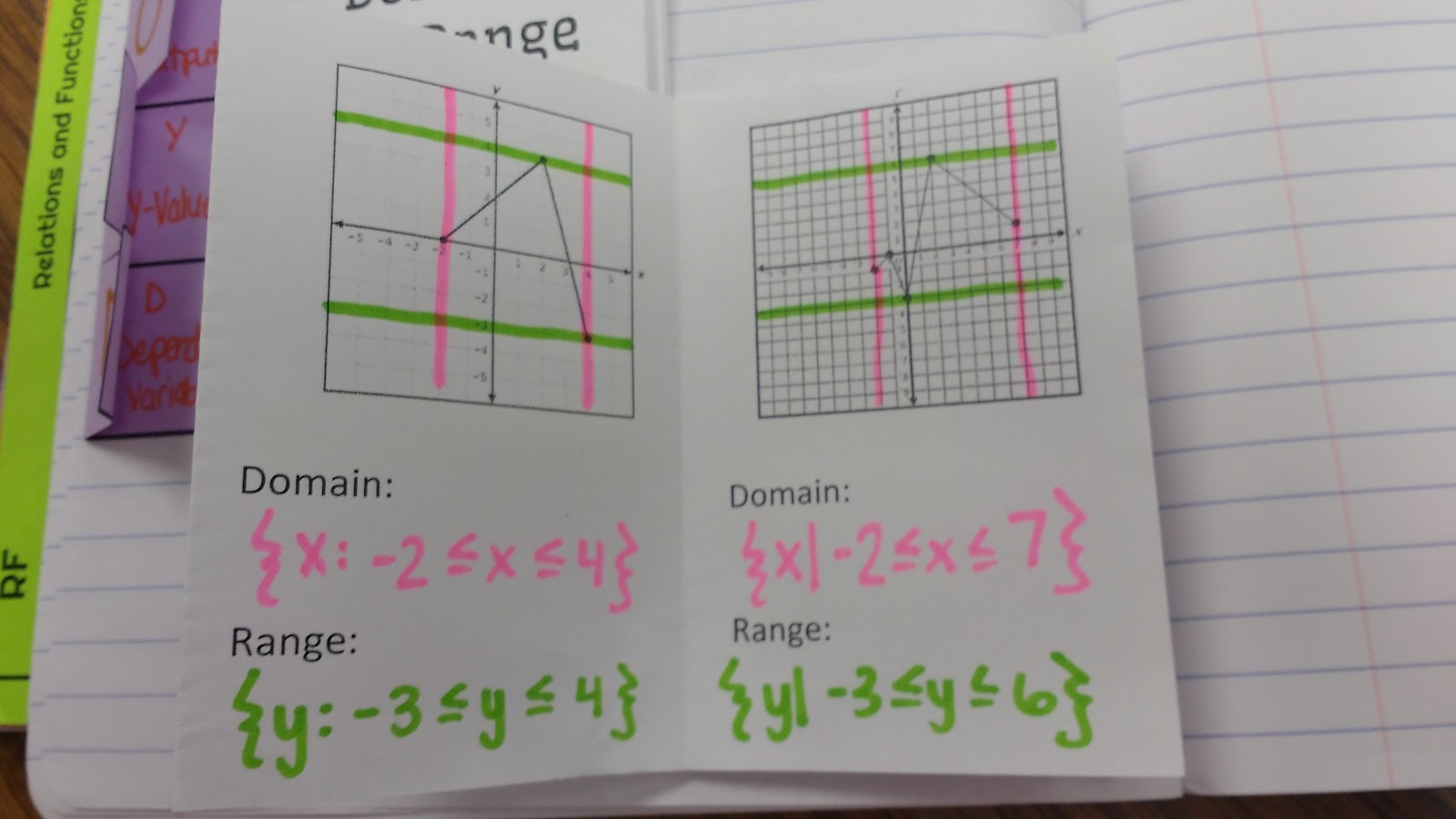
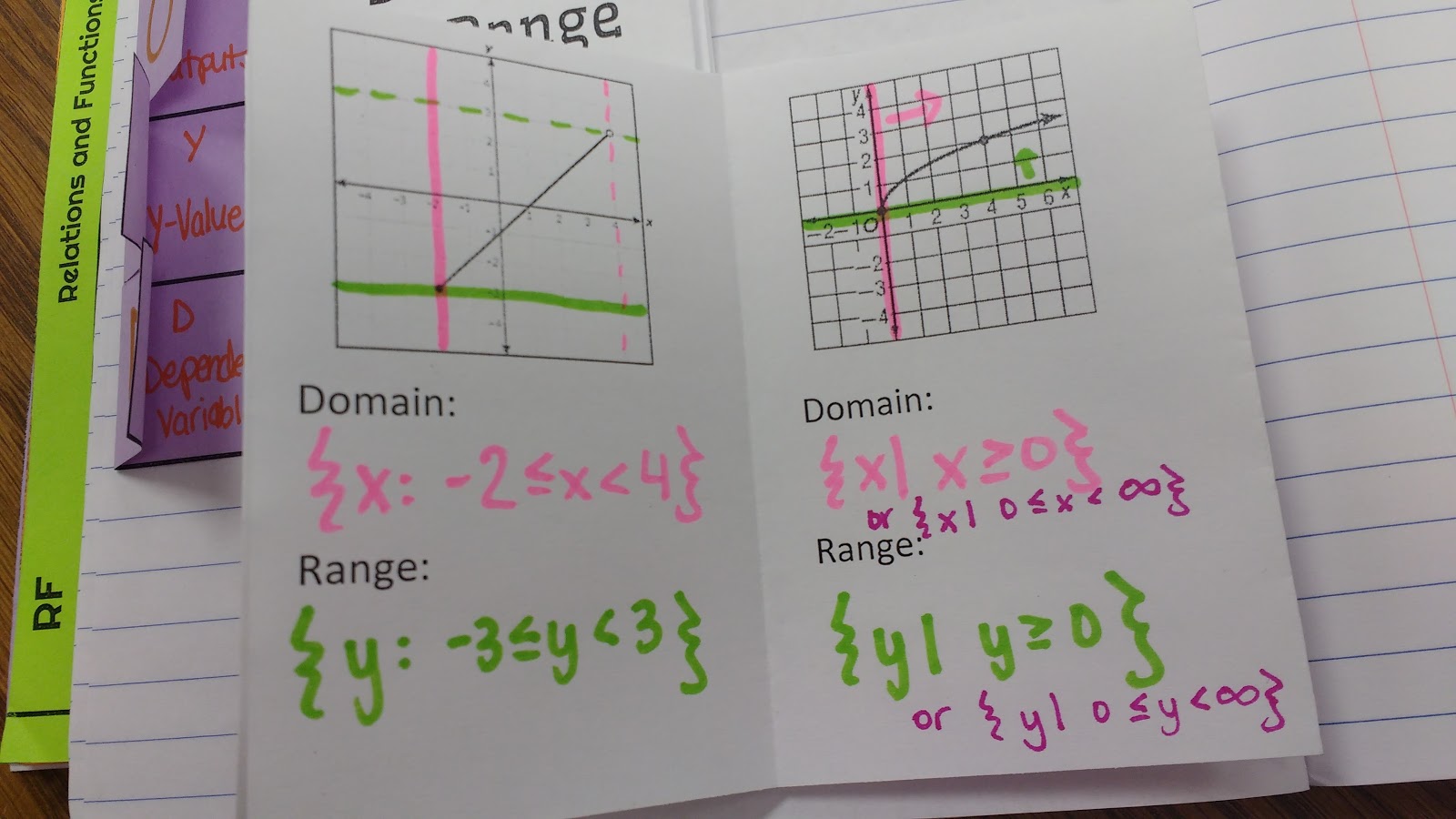
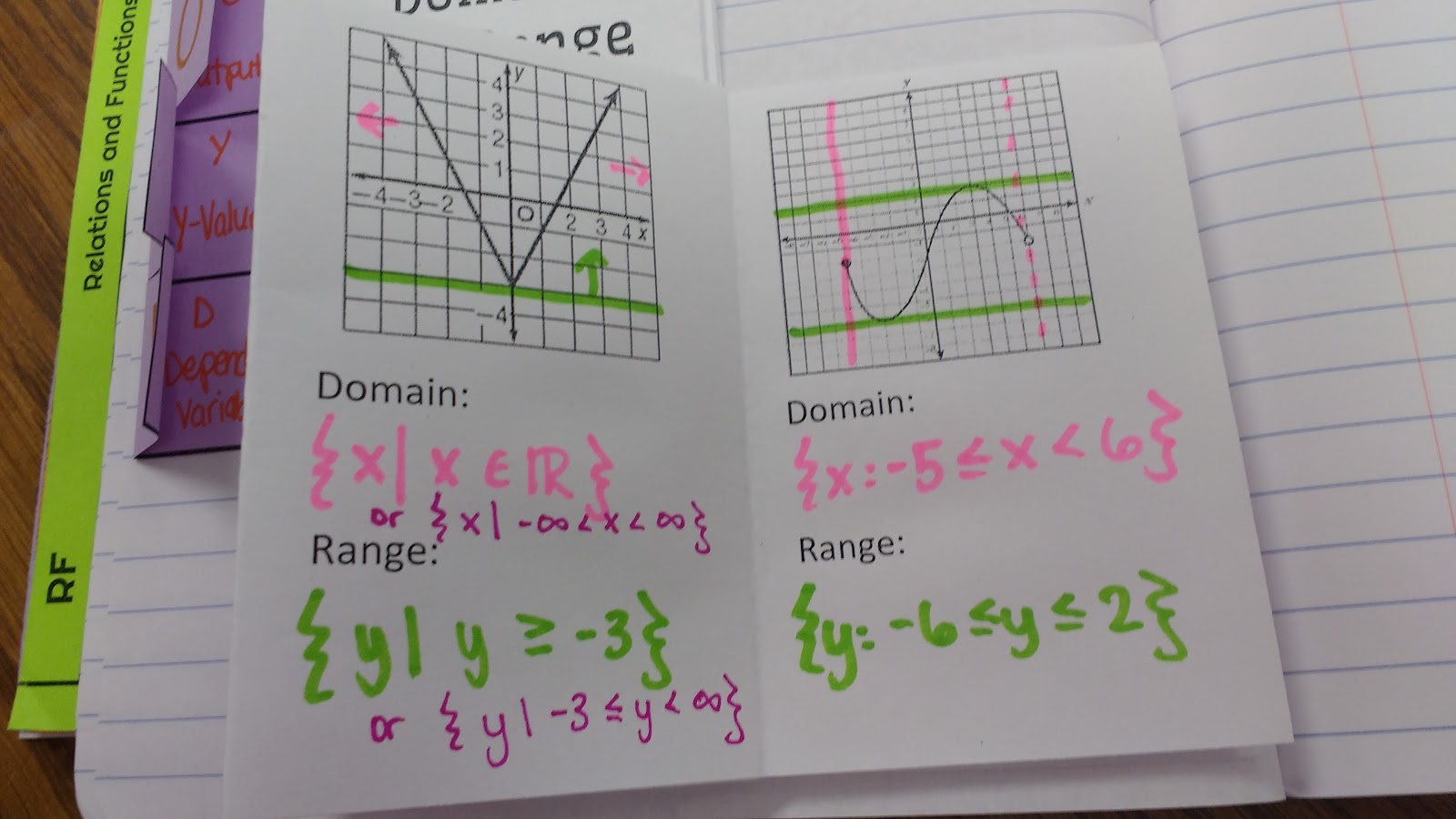
I was pleased that having already done inequalities that my students knew exactly what they needed to do with an open circle on the graph!
Files for Domain and Range Foldables (DIXI ROYD)
Click here to SAVE the file to your device.
DIXI ROYD Foldable (PDF)
2081 saves – 7.35 KB

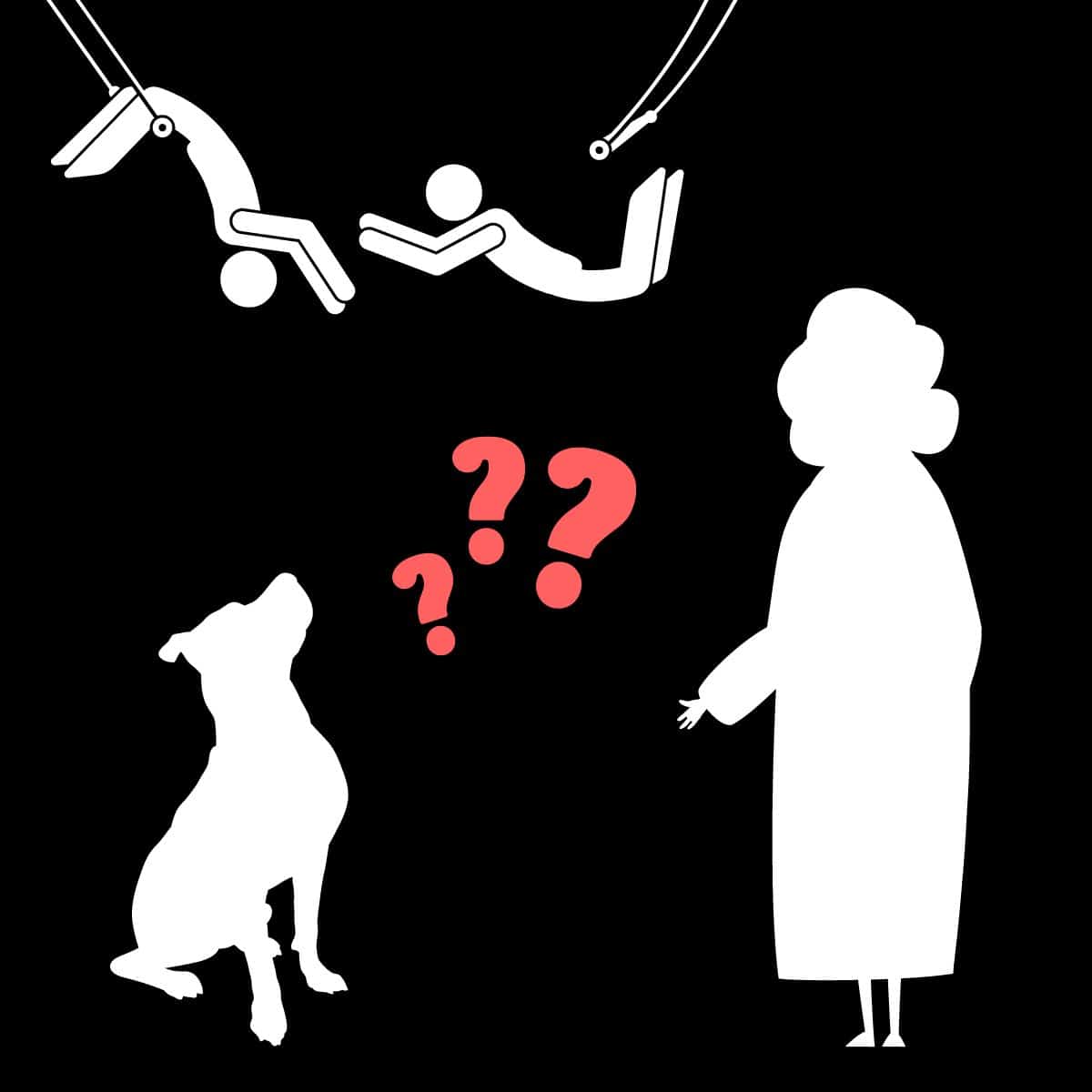

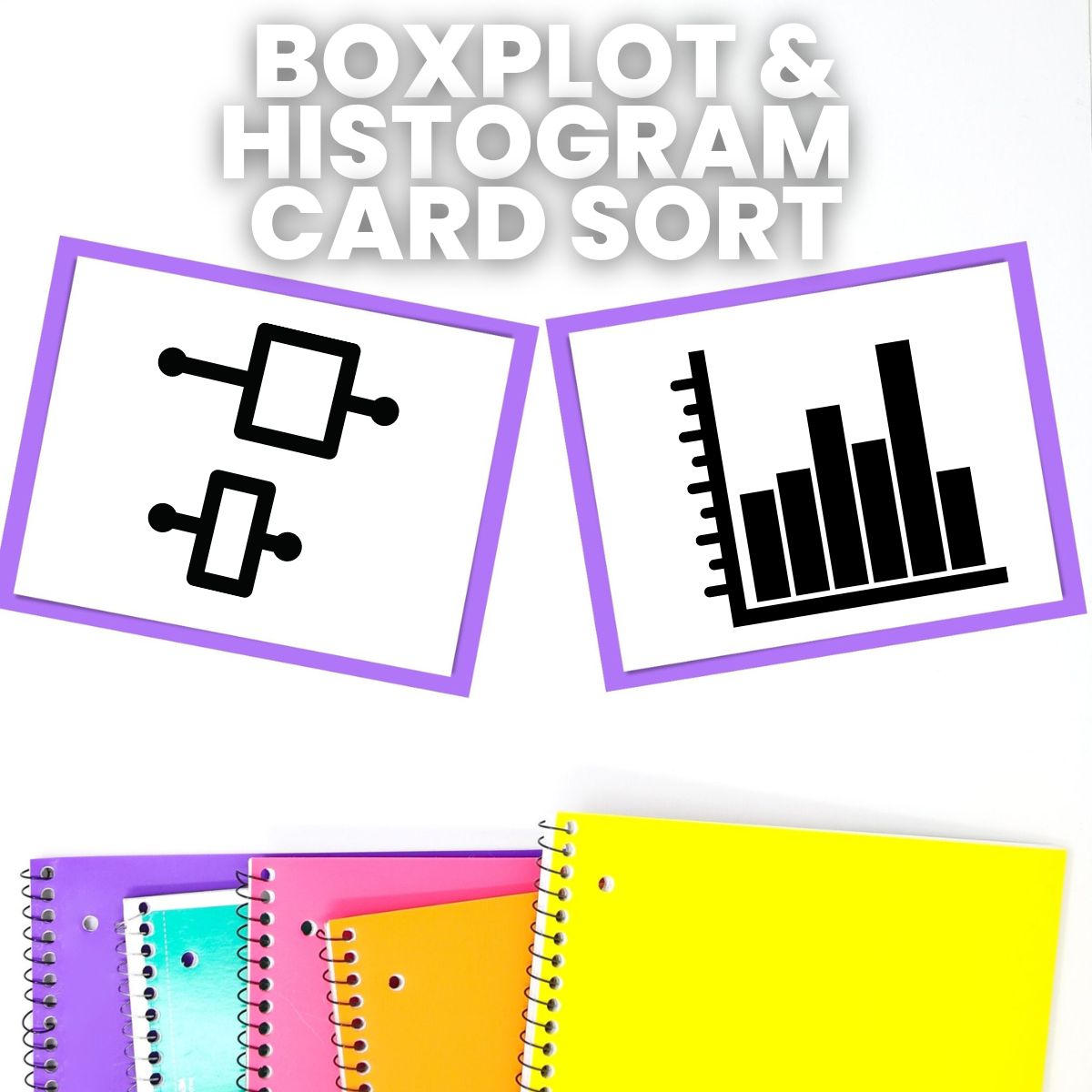
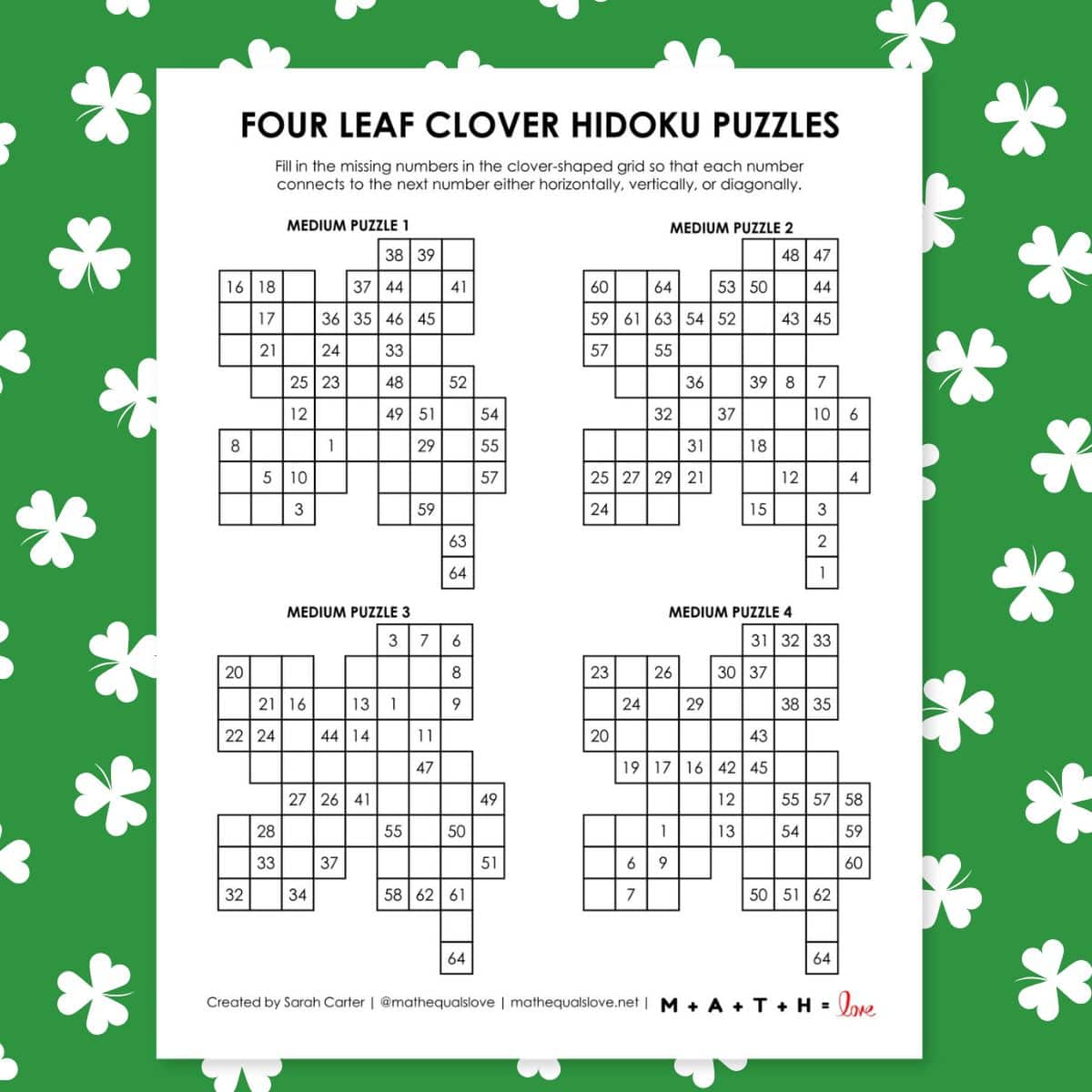
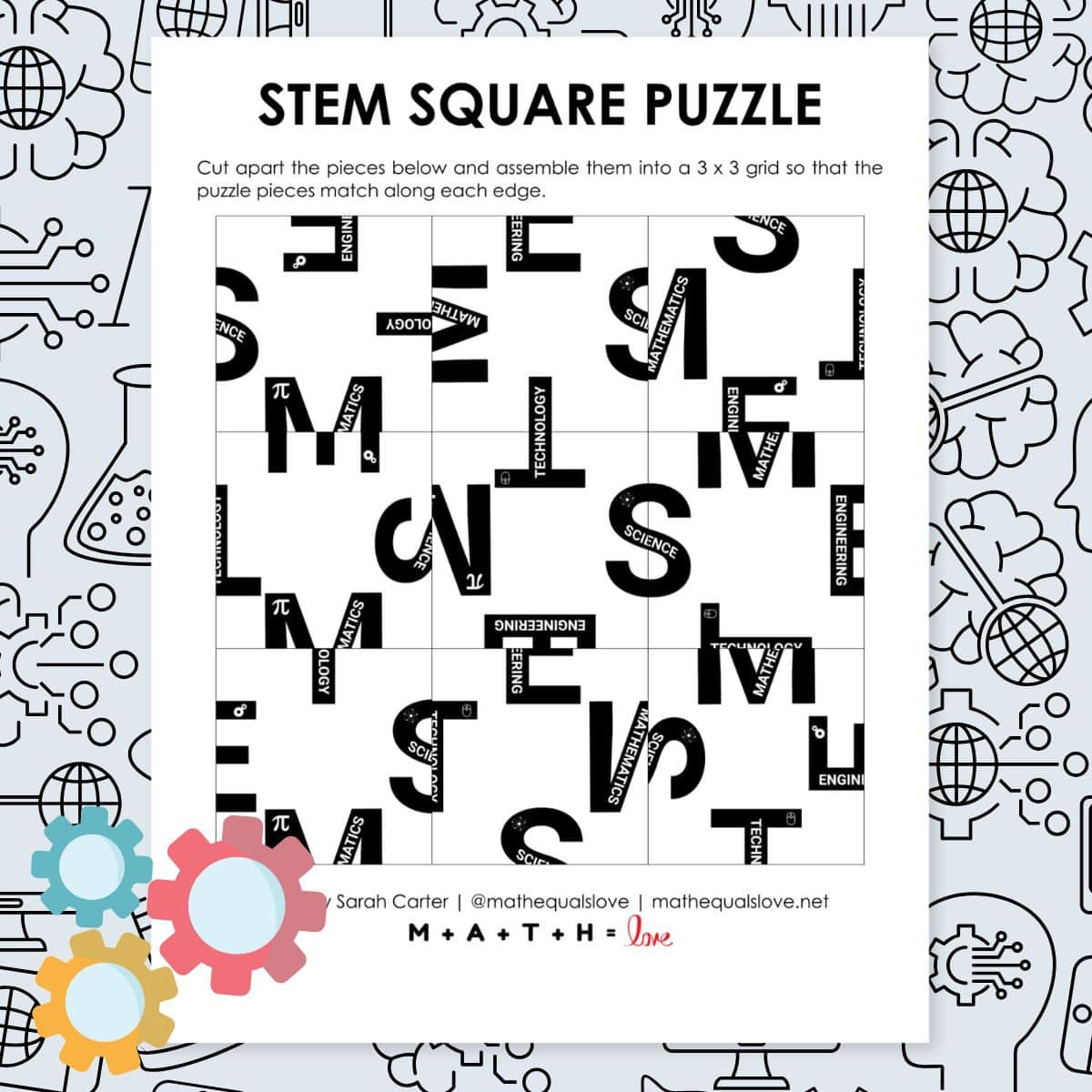

I love your finding the domain and range of discrete and continuous functions! I printed them to copy and I am confused on how to fold it. Can you tell me what you did?
Thank you for all your awesome ideas. I want to say I use the Dixi Royd foldable but I rotate it 90 degrees counter clockwise and place it near the bottom of the page. Then I put Dixi on the bottom (x-axis) and Royd on the left side (Y-axis) Placing it this way seems to help my students connect it better to graphing, the x and y coordinate, which in turns, helps them connect it to the independent and dependent variable. Just thought I would share.
Brilliant! I love learning from others!!!